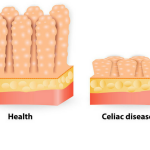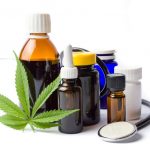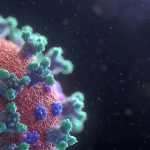A Molecule that May Stop Drug Cravings
Node Smith, ND
Duke University researchers have developed a synthetic molecule that selectively dampens the physiological rewards of cocaine in mice. It also may represent a new class of drugs that could be more specific with fewer side effects than current medications.
Synthetic molecule selectively dampens the physiological rewards of cocaine
In mice treated with the stimulant cocaine or methamphetamine, the new molecule was found to calm their drug-induced hyperactivity and interfere with the dopamine system’s ability to change metabolism in the brain’s rewards center.
In mice that were allowed to self-administer cocaine, the treatment slowed down their drug use in 20 minutes to an hour, and reduced the amount of drug they used by more than 80 percent, compared to a control group of mice.
Researchers working on drug abuse and addiction have pursued molecules that would activate one specific GPCR
The molecule, SBI-553, activates cell surface chemical receptors called G protein-coupled receptors or GPCRs, which are the target of more than 35% of all FDA-approved drugs. (The discovery and characterization of GPCRs earned the team’s Duke colleague, Robert Lefkowitz, the 2012 Nobel Prize in chemistry.)
When a GPCR is activated by a signaling molecule, it transmits that signal to the inner portion of the cell via interaction with two intracellular proteins: G protein and beta-arrestin. Most GPCR drugs in use today indiscriminately activate both G protein and beta-arrestin, and sometimes activating both molecules with the same GPCR can produce dramatically different physiological effects.
Drug developers have been trying to identify compounds that selectively activate one or the other because they have the potential to be safer drugs with fewer side effects.
In a paper appearing online May 28 in the journal Cell, the Duke researchers report the development of a new class of small molecules that may allow for just that — thereby separating the good effects from the bad.
“This kind of idea has been kicking around for 20 years or so,” said senior author Marc Caron, the James B. Duke professor of Cell Biology in the School of Medicine. His work has focused on GPCR signaling involved in disorders like addiction, schizophrenia, Parkinson’s Disease and depression.
For decades, researchers working on drug abuse and addiction have pursued molecules that would activate one specific GPCR called neurotensin receptor 1 (NTSR1) as a way to interrupt the actions of stimulants and treat cocaine and methamphetamine addictions.
Neurotensin
Neurotensin is known to be involved in drug-seeking behavior and food intake in mice. “It regulates the brain’s reward system and motivated behavior,” said senior post-doctoral fellow Lauren Slosky, who is the lead author on the paper.
But so far, the drugs that activate NTSR1 have severe side effects for blood pressure, body temperature and motor coordination, because those are also controlled by NTSR1. “This was known, but nobody could do anything about it,” Caron said.
In collaboration with the Sanford Burnham Prebys Medical Discovery Institute in La Jolla, California, the Duke team screened 400,000 small molecule drugs to see if any of them could stimulate the NTSR1 beta-arrestin response.
One small molecule called SBI-553 that emerged from the screen acts at a previously unknown site on the NTSR1 and selectively activates the beta-arrestin without activating the G protein. SBI-553 can bind the NTSR1 at the same time as this receptor’s natural activator, a peptide known as neurotensin, and it promotes neurotensin’s ability to activate beta-arrestin while blocking its ability to activate the G protein.
“This type of activity isn’t something we’ve seen before”- study co-author
“This type of activity isn’t something we’ve seen before,” said study co-author Lawrence Barak, an associate research professor who has studied GPCRs for decades and initiated the NTSR1 research program at Duke as well as the collaborative, large-scale screening effort.
Like conventional NTSR1 activators, SBI-553 was found to reduce the amount of cocaine the animals consumed and their associated drug-craving. But it did so without the usual side effects of decreased blood pressure and body temperature and motor coordination problems.
“The current findings suggest that the selective activation of the NTSR1 beta-arrestin response is sufficient to produce some of the anti-addiction effects attributed to the NTSR1, but not its effects on blood pressure and body temperature,” Slosky said.
Because NTSR1 is a prototypical GPCR, molecules of this class can now be pursued for other receptors, Slosky said. “This kind of modulator may allow for the fine-tuning of receptor signaling.”
The Duke team and their colleagues at Sanford Burnham were recently awarded a $3.58 million grant from National Institutes of Health (NIH) to develop SBI-553 for clinical trials and evaluate its effects on behaviors associated with opioid addiction.
This research was supported by the National Institutes of Health (F32DA043931, K99DA048970, 1K01AG041211, K08HL125905-01, R21/33DA038019, P30DA029925, R37MH073853.)
1. Lauren M. Slosky, Yushi Bai, Krisztian Toth, Caroline Ray, Lauren K. Rochelle, Alexandra Badea, Rahul Chandrasekhar, Vladimir M. Pogorelov, Dennis M. Abraham, Namratha Atluri, Satyamaheshwar Peddibhotla, Michael P. Hedrick, Paul Hershberger, Patrick Maloney, Hong Yuan, Zibo Li, William C. Wetsel, Anthony B. Pinkerton, Lawrence S. Barak, Marc G. Caron. β-Arrestin-Biased Allosteric Modulator of NTSR1 Selectively Attenuates Addictive Behaviors. Cell, 2020; DOI: 10.1016/j.cell.2020.04.053

Node Smith, ND, is a naturopathic physician in Humboldt, Saskatchewan and associate editor and continuing education director for NDNR. His mission is serving relationships that support the process of transformation, and that ultimately lead to healthier people, businesses and communities. His primary therapeutic tools include counselling, homeopathy, diet and the use of cold water combined with exercise. Node considers health to be a reflection of the relationships a person or a business has with themselves, with God and with those around them. In order to cure disease and to heal, these relationships must be specifically considered. Node has worked intimately with many groups and organizations within the naturopathic profession, and helped found the non-profit, Association for Naturopathic Revitalization (ANR), which works to promote and facilitate experiential education in vitalism.










